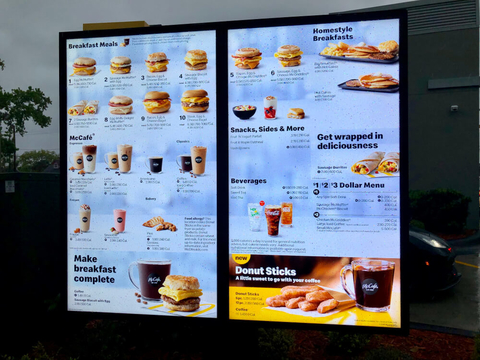Big brands in the restaurant and hospitality industry are jumping on what’s often referred to as the “Amazon model.” It’s the new normal, and it’s what your guests expect of every brand they interact with—including yours.
The Amazon model is where the brand becomes so good at anticipating and catering to customer desires that it forces other competitors to either evolve or dissolve. They know what a customer wants when the customer wants it, without the customer needing to think about it.
It’s hyper-personal. It’s experience-driven. And it’s what drives your customers’ buying habits.
We at Vēmos have always believed this shift was inevitable for hospitality1, and have been working with nightlife venues across the country to help them achieve this level of personalization. The venues we work with know this model isn’t limited to e-commerce, and they aren’t alone.
Check this out: [VIDEO] Best Loyalty Programs for Bars & Restaurants
It’s such an impactful model that McDonald’s recently shelled out $300 million for Dynamic Yield2, a decision-logic company that essentially puts predictive abilities into McDonald’s drive-thru menus.
This is a big deal.
It’s a big deal for consumers. It’s a big deal for our industry. And it’s a big deal for you. We’re experiencing the biggest shift in what’s expected for hospitality experiences, and it’s important for your longevity to stay on top of this shift.
How McDonald’s is Using Tech to Fuel Customized Experiences
What started this acquisition was McDonald’s realizing that they weren’t necessarily losing guests, they were seeing a drop-in customer visits. They knew they needed to regain those visits, and the best way to do that is to take a page from online retailers.
What online retailers have proven is that inspiring loyalty isn’t about programs and clubs. It simply comes down to catering to a specific individual's needs.
So, that’s exactly what McDonald’s sought to bring into their stores.

According to QSR Magazine2, “The new menuboards gives McDonald’s the chance to create a more personalized experience by varying outdoor digital drive-thru menu displays to show food based on time of day, weather, current restaurant traffic, and trending menu items. It can instantly suggest and show additional products to a customer’s order based on their current selections.”
Check this out: Building Guest Loyalty: It’s Not About the Discounts
They tested the concept in select stores in March, and a mere three months later they discovered that it works. So much so that they’re beginning a mass rollout and expect it to be in 100 percent of US and Australia locations by the end of the year.
In those three months with the new menus in place, McDonald’s experienced:
- An increase in the average check per customer.
- An increase in product upsales and menu item add-ons.
- A 6.5 percent increase in same-store sales—its best result in seven years.
- Consistency in providing customized experiences
But it wasn’t just the consumers’ experiences or their sales that were positively impacted—their staff was as well.
The order-taking process was proven to be more efficient because workers didn’t need to manually upsell guests—the tech did it for them. McDonald’s staff members were faster at taking orders and faster at delivering orders, and it proved to serve as a consistent approach to customizing a guest’s experience.
This model isn’t a passing fad. It’s now the backbone of customer service and is becoming the expectation of your guests. Make sure you’re equipped with the best insight to provide this personalized experience to your guests so you can achieve your own “Amazon model.”
Sources
1 “Navigating the Personalization Shift.” Whitney Larson, Vēmos.io. October 9, 2017.
2 “McDonald's New Tech is About to Change the Restaurant Industry.” Danny Klein, QSR Magazine. July 2019.